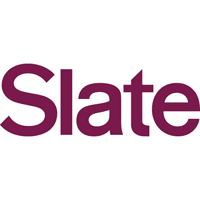Source: Bigstock Photo

In keeping with the theme of Thanksgiving, this week’s Five on Friday is a bit on the meaty side. In this week’s edition, Poynter’s Melody Kramer shares tips for ensuring your subscription website is accessible to disabled customers and prospects, the Washington Post reports on a possible rollback by the FCC of net neutrality rules, we offer resources on Europe’s General Data Protection Regulation which goes into effect May 2018, Crain’s Chicago Business cuts out comments, and Slate banks on the three-legged stool for success – membership, redesign and a better ad experience.
- Is Your Subscription Website Accessible to All?
- European Data Privacy Rules Go Into Effect May 2018. Are You Ready?
- FCC and the Proposed Net Neutrality Rules
- Crain’s Chicago Business Cuts Out Comments After 20 Years
-
Slate Banks on Three-Legged Stool: Membership, Revamped Website, New Ad Experience
Is your subscription website accessible to all?
Source: Bigstock Photo

Earlier this year, the U.S. Access Board published a rule to update accessibility requirements for information and communication technology (ICT) under Section 508 of the Rehabilitation act of 1973. The updated requirements go into effect January 18, 2018. While these new changes apply to ICT used by federal agencies, they are good guidelines for subscription companies to follow to provide better service to their customers and to avoid lawsuits filed for violating Title III of the Americans with Disabilities Act.
In an article last week on Poynter, Melody Kramer wrote an article on website accessibility, ‘How Accessible Is Your Website for the Disabled? Consider Doing an Audit to Find Out,’ that highlights some key points on this issue.
- Conduct a full accessibility audit to ensure your subscription website is compliant with the law, but also so that it maximizes the user experience, regardless of your readers’ abilities.
- The POUR standard provides for better user experiences, addressing the four primary types of disabilities, visual, hearing, motor and cognitive. P – Perceivable, O – Operable, U – Understandable, and R – Robust.
- When conducting a website audit, look at how closely the site’s content, design and code adhere to the POUR standard.
- Is the text written in clear language? Is the text easily organized and presented in logical ‘chunks’ for easy readability?
- Is the font size large enough to read?
- Does the interactive content (e.g., audio, video, etc.) have subtitles or closed captioning? Does it contain images or visual representations that could cause seizures or vertigo?
- Do input devices other than a mouse (touchscreens, voice-activated assistants, etc.) work with the site?
‘Everyone experiences cognitive impairment when multitasking – a straightforward design ensures vital concepts can be communicated quickly and effectively,’ Kramer writes.
Read the full article on Poynter to read more tips from Kramer as well as her interview with Eric W. Bailey, a former digital designer for The Boston Globe who is now a user experience designer for Cantina.
FCC and the New Net Neutrality Rules
Source: Bigstock Photo

The Federal Communications Commission has released details of its plans to roll back net neutrality regulations imposed during former President Obama’s administration. Under the new rules, Internet service providers would be given broad powers to decide what websites and online services ISP customers see and use, reports the Washington Post. This even means that ISPs would have the ability to block websites and charge web companies like Netflix and Amazon for faster delivery of their content. Cable companies and ISPs would, however, be required to disclose their policies to consumers.
‘Under my proposal, the federal government will stop micromanaging the Internet,’ said Ajit Pai, FCC chairman.
Acceptance of these new rules could be approved on December 14 at the FCC’s final meeting of the year. Read more about the proposed changes on Washington Post, ‘FCC Plan Would Give Internet Providers Power to Choose the Sites Customers See and Use‘ by Brian Fung.
European Data Privacy Rules Go Into Effect May 2018. Are You Ready?
Source: Bigstock Photo

In May 2018, the General Data Protect Regulation goes into effect in Europe. If your subscription company has customers in the European Union, you will be subject to these new personal data privacy rules. Are you prepared? Here are some resources to help you understand the rules and risks associated with GDPR.
Subscription Insider: How the New European Data Privacy Law Will Impact Subscription Companies
Pagefair: How the GDPR Will Disrupt Google and Facebook
Pagefair: Understanding the 3 Primary Impacts of GDPR: Tracking, Lawsuits and Fines
Key Aspects of GDPR Explained: European Digital Rights
Crain’s Chicago Business Cuts Out Comments After 20 Years
Source: Bigstock Photo

After more than 20 years of publishing ChicagoBusiness.com, Crain’s cuts out comments from readers to encourage more civil, direct dialogue via email and social media.
‘Inevitably, however the trolls leave their trails of slime before we know it. Simply put, we do not have the personnel to manage this commentary, to keep it civil and fair and to halt the back and forth before it devolves into invective, name-calling and, in too many cases, outright hate speech. We’d rather not play host to these anonymous commenters,’ write Crain’s editors of their decision. ‘They drive out more civil readers and potential commenters. They sully our content, our brand and our sponsors. So, to borrow a phrase, we’re draining the swamp.’
Crain’s Chicago Business is not alone in refusing to engage in uncivil discourse. Other media outlets who have gone the same route including The Verge, the Chicago Sun-Times, Popular Science and Alaska Dispatch News. Even The New York Times has opted to limit which articles are open to comments.
While readers may not understand or even like the omission of comments, social media and email provide ample opportunities for readers to comment on stories and issues they care about. They also provide media outlets like Crain’s with content and moderation mechanisms that are less draining on resources. For example, on social media, commenters have to sign up for accounts, so they can’t be anonymous, and when commenters respond via email, the media outlets have a way to follow up one-on-one, rather than in a public forum, creating a paper trail and a certain amount of privacy.
Slate Banks on Three-Legged Stool: Membership, Revamped Website, New Ad Experience
Source: Slate

After the 2016 election, Slate saw success with its membership program, growing it by 50 percent which indicates that engaged readers are willing to pay for news, reports MediaPost. Coming next for Slate is a redesigned website, expected to launch in the first quarter of 2018. While site revamps happen almost every day, Slate is doing something a bit different with its redesign. Instead of serving up intrusive ads that repel readers, Slate will get rid of click-bait style and low quality ads, including omitting ads on the right hand side of the screen and allowing video ads to be quickly muted or stopped.
‘The digital advertising industry has generally aimed to grab readers’ attention at any cost, even at the expense of reader experience. Many publications have forgotten what it means to create a valuable advertising experience, forcing readers to ignore ads or turn to ad blockers,’ said Slate.com. ‘We rely on engaging pieces to pull readers farther down the page, then weave advertising at regular frequencies into the content.’








